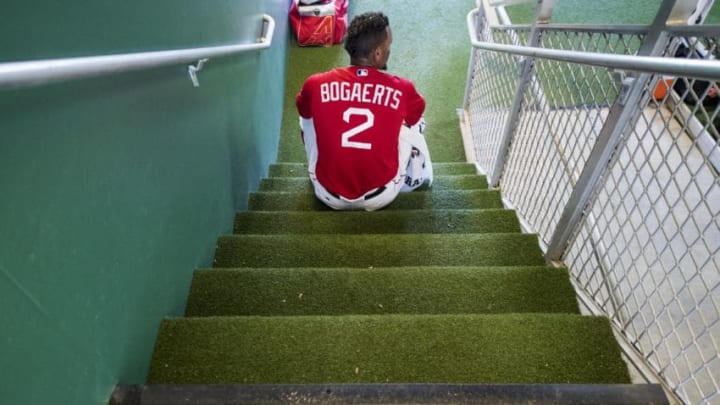
What does that have to do with Bogaerts?
xStats tracks data back to the beginning of 2015, so we are unable to include Bogaerts’ 2014 numbers. But what we can see is plenty for us to see a difference between his previous seasons for the Boston Red Sox and the Tampa series that just concluded.
Taking the above ranges we can combine them into various descriptive groups as measured by wOBA:
| Year | Bad Contact | Good Contact | Optimal Contact | Power Contact | Exit Velocity |
| 2015 | 52.70% | 47.40% | 19.60% | 18.00% | 87.7 |
| 2016 | 52.80% | 47.20% | 20.40% | 19.80% | 89.2 |
| 2017 | 56.70% | 43.20% | 21.90% | 18.30% | 87.3 |
| 2018 | 33.30% | 66.70% | 53.40% | 40.00% | 94.0 |
We can immediately see that his bad contact rate is significantly lower than in previous seasons with the two largest gains being in optimal contact (31.5%). Good contact and power contact increased as well, but not by nearly as much. More than half of his overall contact has been in the two highest ranges for wOBA and the results have shown it in five doubles and one home run.
Unlike last year, the ball is coming off of his bat at a much greater launch angle while improving on his average exit velocity. And while we are focusing on launch angle here, exit velocity is the more important component when predicting success. That said, Bogaerts’s exit velocities have been healthy, in the upper portion of the middle third of the league the last three years.
For whatever it’s worth, 94.0 mph would have been second to only Aaron Judge’s 94.9 last season.
Next: So what's it all mean?
